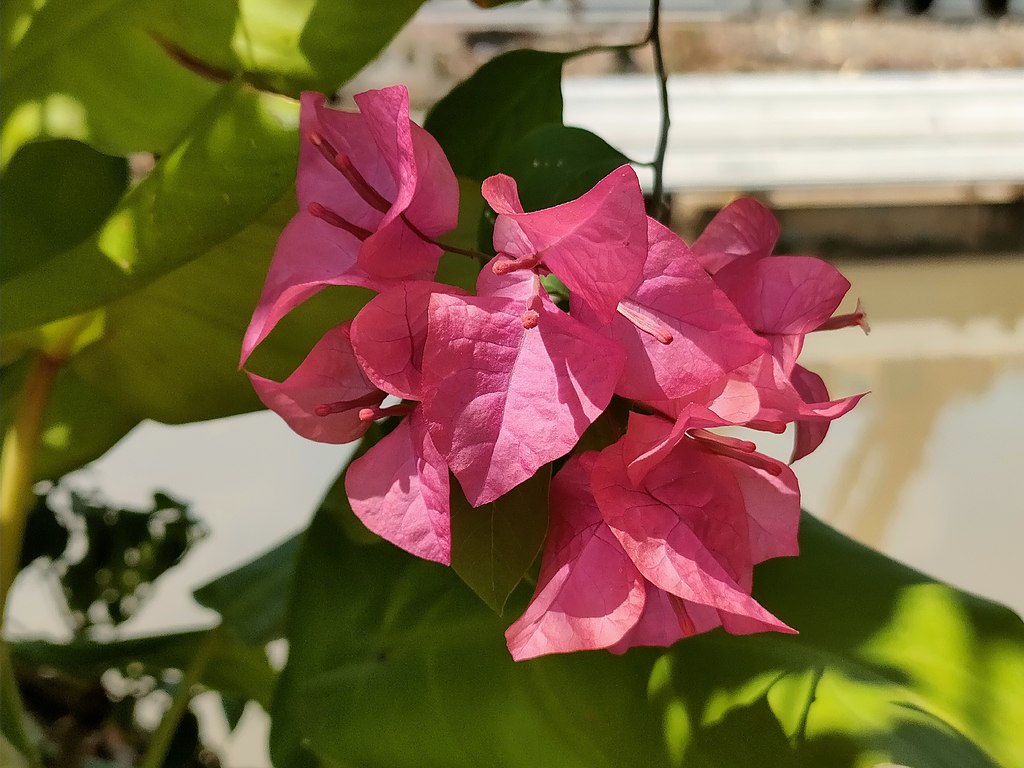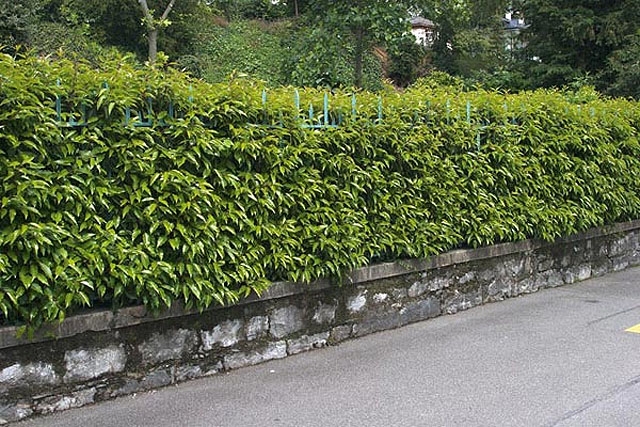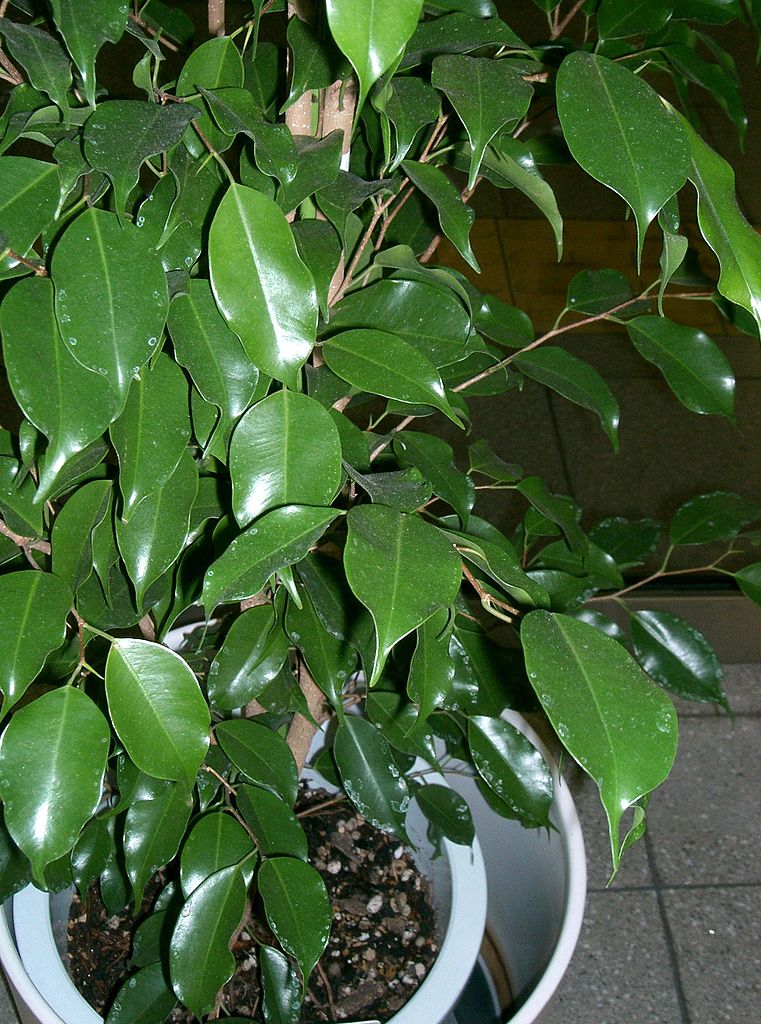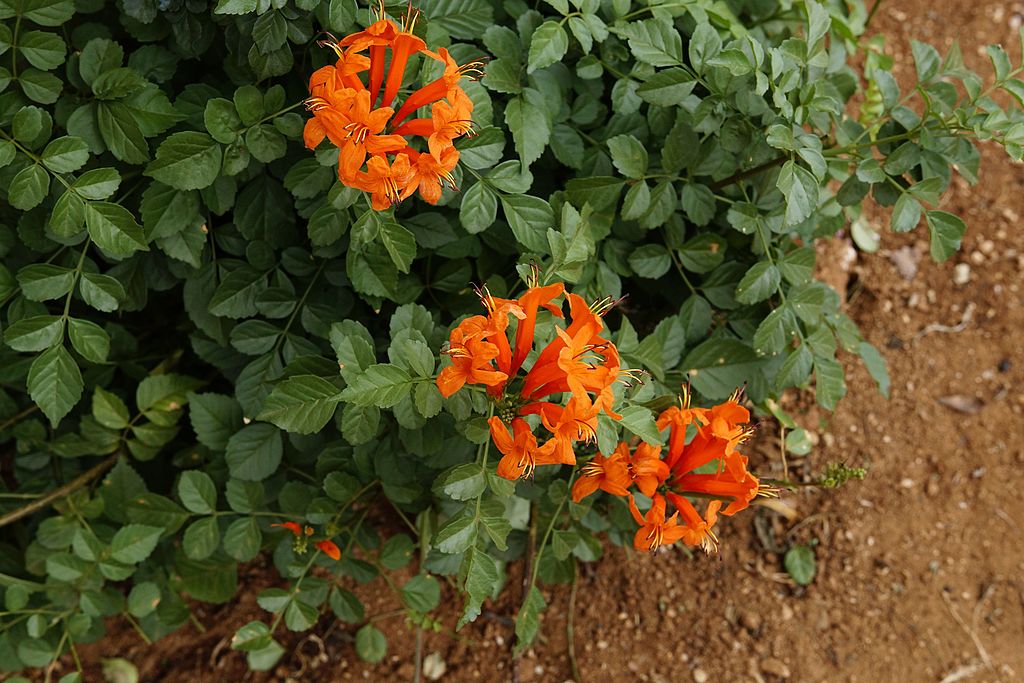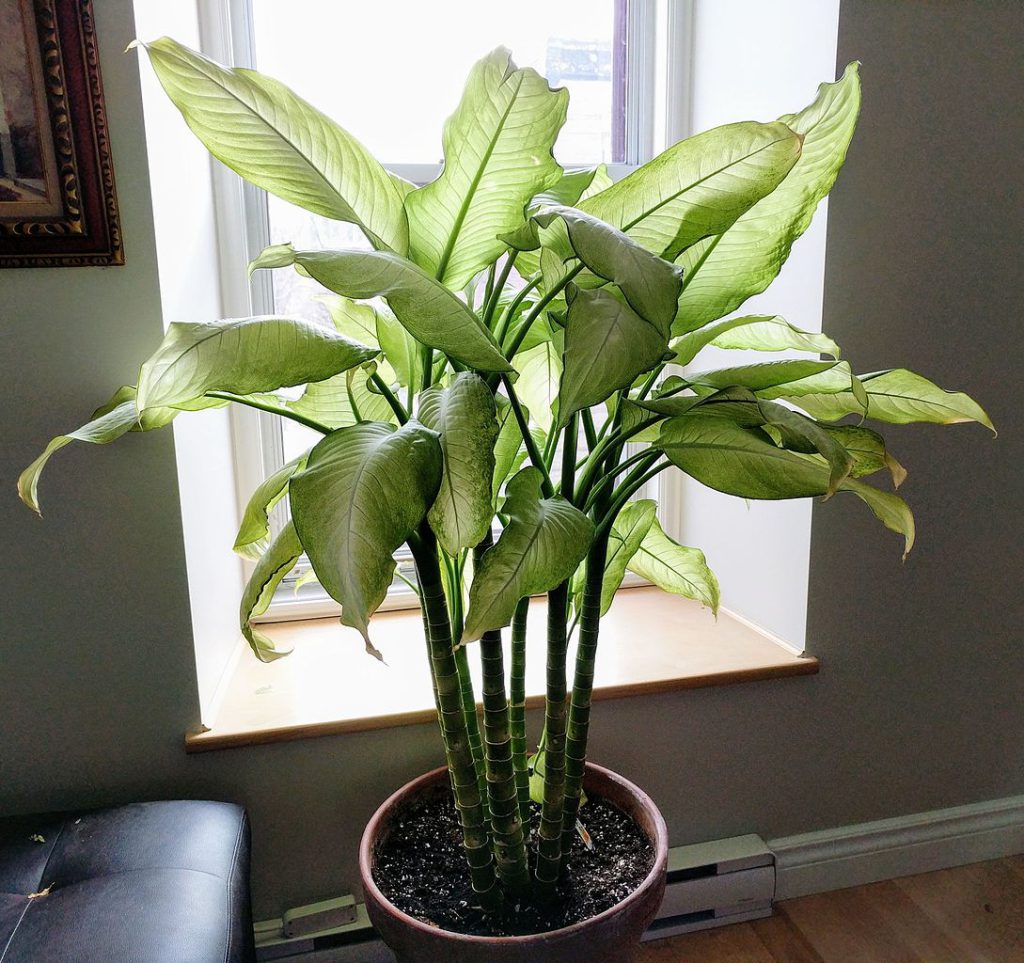If you visit a Greek island during summer, one of the most iconic memories you will carry back home, are the colorful bougainvilleas in contrast with the white walls.
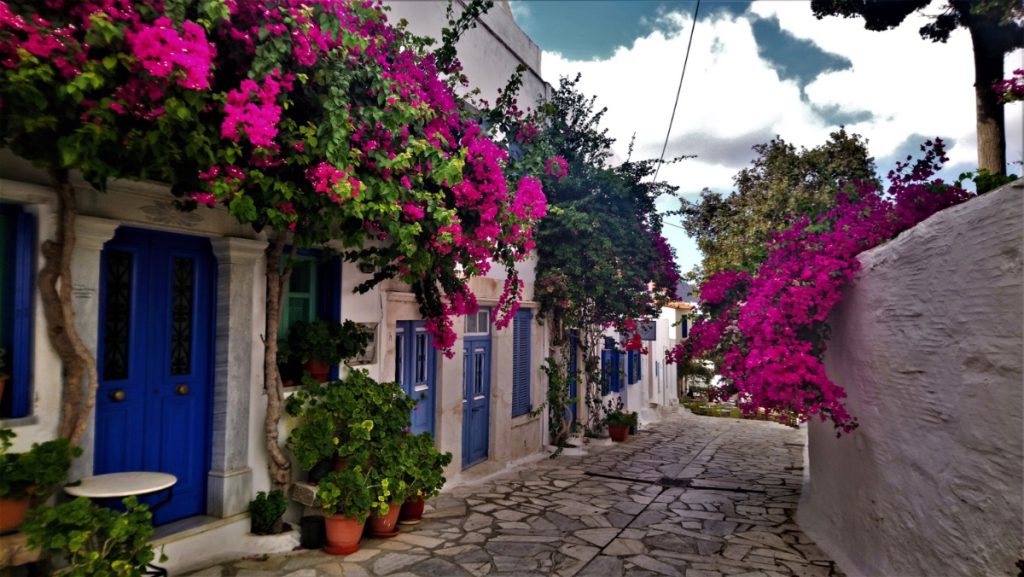
Bougainvillea is a hardy tropical vine that grows in areas where winter temperatures remain above -1 degrees Celsius. The plant usually produces three rounds of vibrant blooms in spring, summer, and autumn. Colloquially called paperflower (or paper flower) in reference to the texture of what appear to be its blooms.
Bougainvilleas need a bright sunny position
As large climbers they can be planted directly into a conservatory border or grown in large containers.
Bougainvillea thrives on neglect and begins to suffer and stops blooming with too much fussing on the part of the gardener.
Bougainvillea’s flowers
What makes Bougainvilleas so unique and most people want to have them in their garden, is the colorful blooms. The colors you can find bougainvilleas in are: white to yellow to gold to pink to magenta to reddish-purple.
At first we all think that these bright colored blooms, having a paper like texture (that is why the plant is also called paperflower), are the flowers of bougainvilleas. But this is not the case.
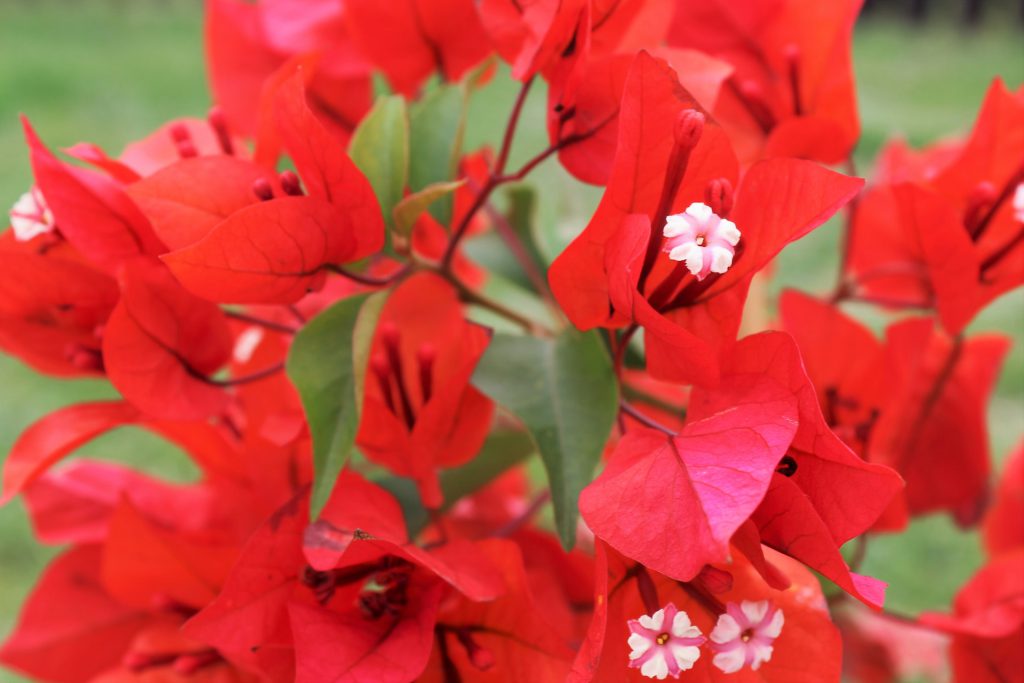
Photo by elaine alex on Unsplash
The tiny white centers are actually the flowers and the bracts (the colored leaves) are what give us those big shows of color. Bougainvilleas put out a big explosion of color, drop their bracts and then flower again.
Bracts are modified leaves, typically exhibiting bright colors, that protect the tiny blooms while also attracting pollinators to pay a visit – which they might not do as readily otherwise. They also double as protection for seed pods that balloon after the blooming period ends.
Aside from bracts, leaves are green and alternately placed along the long, sprawling canes characteristic of these species.
Typically, members of this genus are considered woody, evergreen vines, although they can also be deciduous in regions where winter temperatures are cooler.
Pruning to create other forms, such as shrubs or small trees, is a common landscaping practice in warm, humid regions all over the world.
Vines can easily spread to about 6 meters in length, or sometimes more, becoming woodier and heavier over time.
Use caution in deciding what to attach them to so you don’t end up with a damaged fence, arbor, pergola, or house.
Keeping the size and shape in check with pruning should be balanced with allowing new growth to develop, as the colorful bracts will be more plentiful.
Bougainvillea, where the name came from
Bougainvilleas are named after admiral Louis-Antoine de Bougainville. Admiral Louis-Antoine de Bougainville offered his ship to French botanist Philibert Commerson to travel abroad. That happened in mid-1700s.
The plan of the voyage was to circumnavigate the globe and termed “The Bougainville Expedition”
When they made a stop in Rio de Janeiro, Brazil, botanist Philibert Commerson came upon two shockingly bright specimens of the plant that he later decided to rename in honor of his friend.
In Brazil, the plant was already referred to as “primavera”, which means “pring” in Portuguese. Throughout South and Central America, bougainvillea was already a popular landscaping ornamental.
After returning to Europe with cuttings of the specimens, cultivation began with mild interest due to the low tolerance bougainvillea has for cold temperatures.
After several years, however, it gained some popularity in warmer regions, such as Greece and southern Spain. Today, bougainvillea is an iconic ornamental mental in Greek islands.
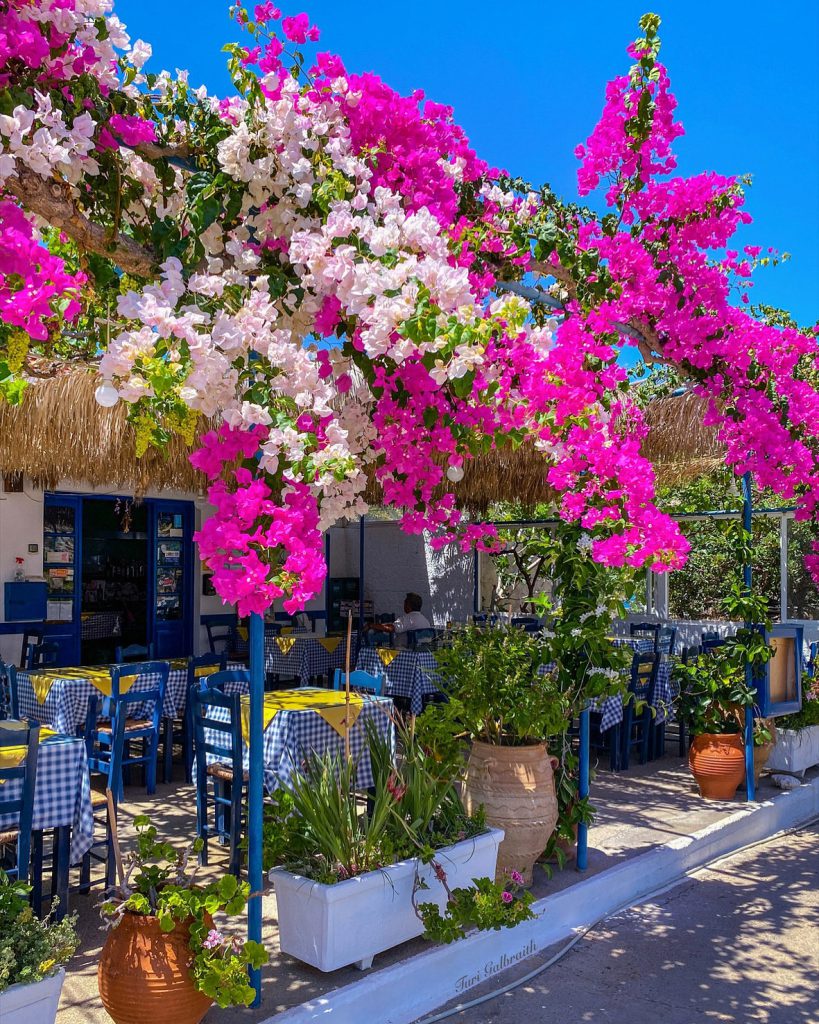
Actually, when you think about Greek islands and holidays, pictures of bougainvilleas against white walls, always come in your mind.
How to grow Bougainvilleas
Where to plant Bougainvilleas
Bougainvillea has shallow roots that spread laterally with a taproot that reaches only slightly deeper.
The lateral roots, however, can pose a risk to surrounding structures.
So, do not plant close to a house or other structure where damage to the foundation might occur.
Bougainvilleas need exposure to sunlight
Choose a location with full sun exposure for at least eight hours per day.
Without enough sunlight, bougainvillea will start to protest and signs will become apparent.
These signs include leaf and bloom drop, few blooms, and fewer colorful bracts.
What soil Bougainvilleas need
A mix of sand and loam is best, so amending prior to planting may be necessary to create ideal conditions.
Be sure that the soil does not retain too much moisture as these vines cannot tolerate soggy ground. Root rot becomes a concern, and can be deadly, if the substrate remains too damp.
Ideal pH is in the acidic range between 5.5 and 6.5.
Since this vine needs slightly acidic soil, you can adjust both pH and drainage simultaneously by mixing finely shredded pine bark, or dried pine needles into the substrate at the time of planting to increase acidity.
Watering Bougainvilleas
Be sure to avoid overwatering as this is a major culprit in reduced blooming and overgrowth of green foliage rather than flowers.
In the absence of rain, supply a deep watering when the soil feels dry just below the surface. This may be weekly during the hottest times of year, or once every two to three weeks in cooler seasons.
Container planting Bougainvilleas
Even though most types can grow to large sizes, bougainvillea can also make a beautiful container planting. If you don’t want to deal with frequent pruning to control the size, a dwarf cultivar that remains compact might be the best choice.
An unglazed ceramic planter is best since it transpires easily and doesn’t retain too much moisture – although, you’ll want to check often to make sure it hasn’t allowed the soil to dry out too much.
The container doesn’t need to be huge since plants of this genus prefer close quarters and don’t mind being a bit rootbound. A diameter two to three inches larger than the root system is usually sufficient.
It’s difficult for the roots to use excess water in a container with too much room to spare, resulting in the potential for overwatering and rot.
Pruning Bougainvilleas
Bougainvilleas require a trellis or pillar for support and can be trained as a standard and spur-pruned to restrict size. They flower on the current seasons growth so pruning in late winter or early spring, just before growth begins.
The best time to prune bougainvillea in temperate zones is in the winter, typically just after it has finished blooming or within a few weeks.
Pruning too close to spring will reduce new growth and flowers, which appear at the terminal ends of the canes.
In warm, humid zones, wait until early spring or midsummer, as blooms typically appear in the winter in warmer regions.
Pruning into a tree form should be done in stages to avoid removing any more than 30 percent of the total canes at a time. Excessive pruning can lead to shock, which can be deadly.
Greek name: Μπουκαμβίλια, Μποκαμβίλια.
Sources: https://www.valentine.gr/bougainvillea_gr.php, https://gardenerspath.com/plants/vines/grow-bougainvillea/, https://www.gardeningknowhow.com/ornamental/vines/bougainvillea/bougainvillea-in-containers.htm, https://www.rhs.org.uk/plants/bougainvillea/growing-guide
Tags: ORNAMENTAL PLANTS

